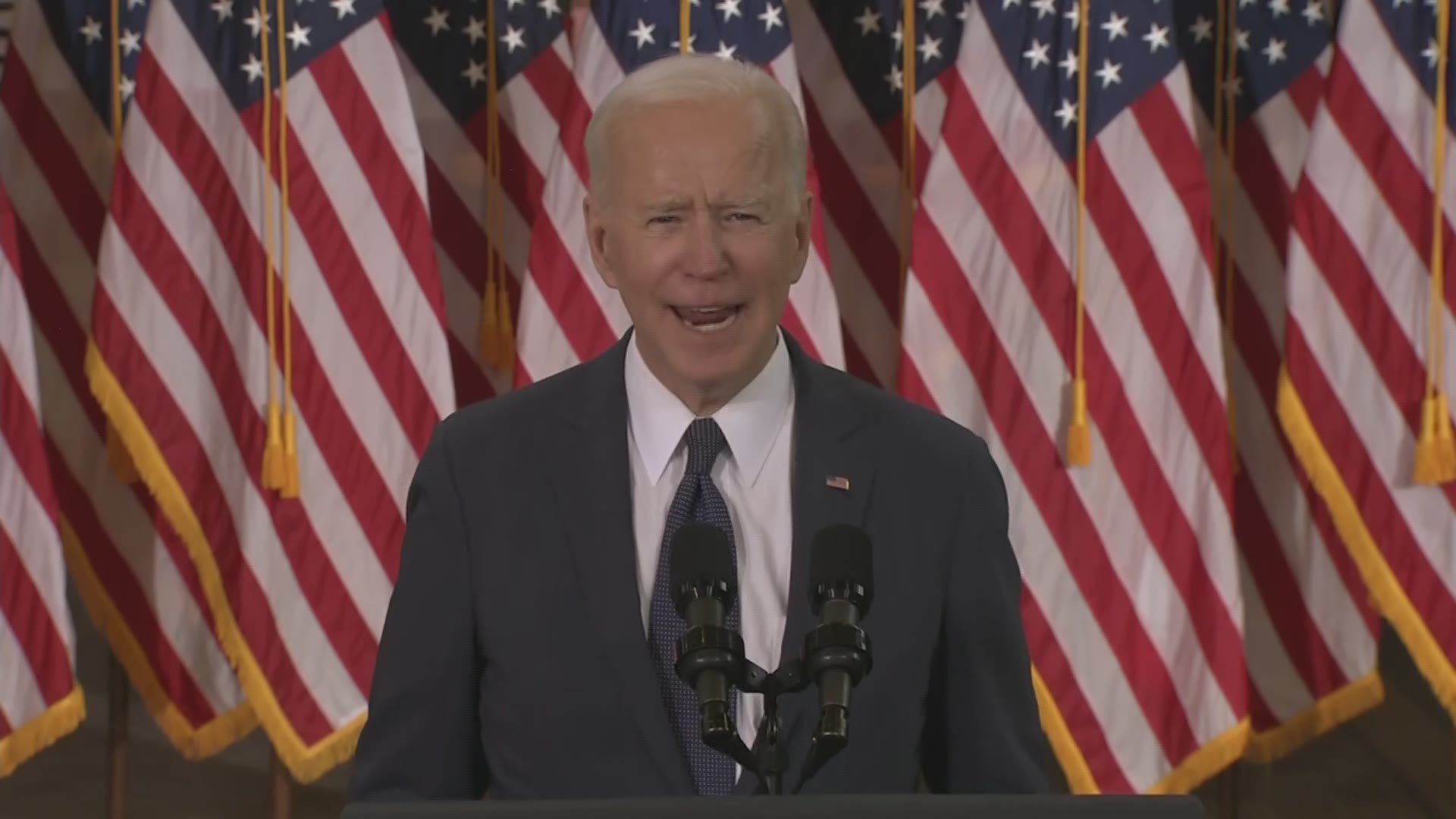SEATTLE — The Biden White House is amplifying the push for its $2.3 trillion infrastructure package with the release of state-by-state breakdowns that show the dire shape of roads, bridges, the power grid and housing affordability.
The figures in the state summaries, first obtained by The Associated Press, paint a decidedly bleak outlook for the world's largest economy after years of repairs being deferred and delayed.
Washington state’s infrastructure received a C grade, according to the Infrastructure Report Card released Monday. Washington’s neighboring states of Oregon and Idaho received a C- grade, along with California on the west coast.
The highest grade went to Utah, which notched a C+. The lowest grade, a D-, went to the territory of Puerto Rico.
The report was sectioned out into 12 different areas of concern the package would provide funding for across the country. Below is a breakdown for Washington state, according to President Joe Biden’s proposed American Jobs Plan (AJP):
ROADS AND BRIDGES
There are 416 bridges and more than 5,469 miles of highway in poor condition in Washington state. Each Washington driver pays $659 each year due to driving on roads needing repair, according to the report.
Washington’s report also says commute time in the state has increased by 12.7% since 2011.
The White House said the AJP allocated more than $600 billion to transportation infrastructure nationwide, including $115 billion for repairing roads and bridges.
PUBLIC TRANSPORTATION
Seventeen percent of Washington state’s trains and other transit vehicles are past their useful life span, according to the report.
Washingtonians who use public transportation spend an extra 72.9% of their time commuting, and residents in non-white households are 1.7 times more likely to commute using public transportation.
The White House said the AJP “will modernize public transit with an $85 billion investment.”
RESILIENT INFRASTRUCTURE
Washington state experienced 10 “extreme weather events” from 2010-2020, costing the state $5 billion in damage.
Biden is calling for $50 billion to improve infrastructure resiliency and support disaster recovery as part of the AJP.
DRINKING WATER
Washington state’s drinking water infrastructure will require $11.7 billion in additional funding over the next 20 years, according to the report.
The White House said the AJP would spend $111 billion to ensure clean drinking water.
HOUSING
According to the report, 487,000 Washingtonians are rent-burdened, which means they spend more than 30% of their income on rent.
The AJP proposes $200 billion to increase housing supply and address affordable housing.
BROADBAND
According to the report, 8.49% of Washingtonians live in areas without minimally acceptable broadband speeds, and 53.82% of residents live in an area with only one internet provider. The report says 8.8% of Washington households do not have an internet subscription.
The White House said the AJP would “invest $100 billion to bring universal, reliable, high-speed, and affordable coverage to every family in America.”
CHILDCARE
There is an estimated gap of $556 million in what Washington state schools need for improvements and maintenance, according to the report. The administration also said 63% of people living in what they called a "childcare desert."
The AJP would “modernize our nation’s schools and early learning facilities and build new ones,” according to the White House.
MANUFACTURING
The report says manufacturers make up more than 11% of the state’s total output, employing 298,000 residents, which is 8.5% of Washington’s workforce.
The AJP seeks to invest $300 billion to “retool and revitalize American manufacturers, including providing incentives for manufacturers to invest in innovative energy projects in coal communities.”
HOME ENERGY
The average low-income family spends 4-6% of their income on home energy costs, according to the report.
Biden’s proposed plan aims to “upgrade low-income homes to make them more energy-efficient." It would invest in the Weatherization Assistance Program, a new Clean Energy and Sustainability Accelerator to pay for building improvements and expand home energy tax credits.
CLEAN ENERGY JOBS
According to the report, Washington state has “outsized potential” for innovative energy technologies that create "good paying union jobs." As of 2019, 85,035 Washington residents were working in clean energy.
VETERANS HEALTH
More than 560,000 veterans call Washington state home. Of those veterans, 10% are women and 44% are over the age of 65.
Under Biden’s AJP, $18 billion would go towards improving infrastructure at VA health care facilities, including improvements to serve women and older veterans.

